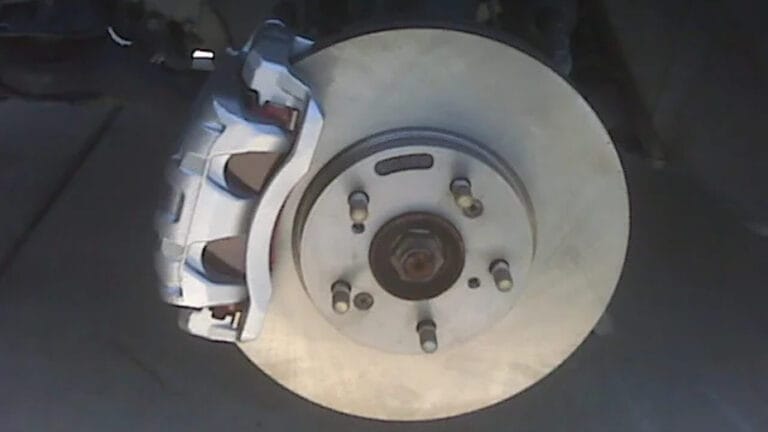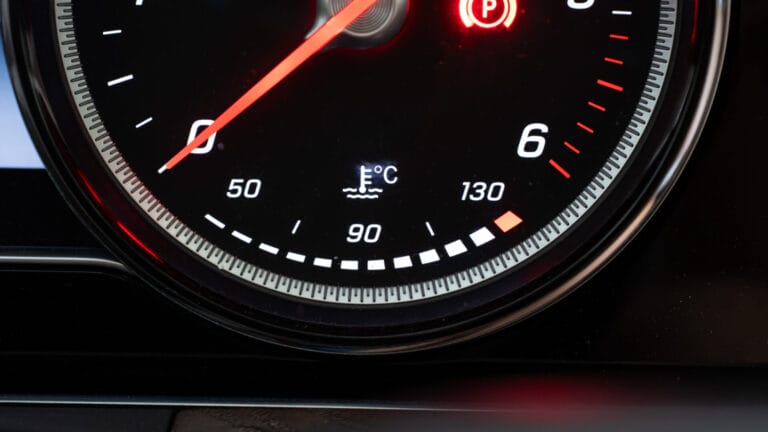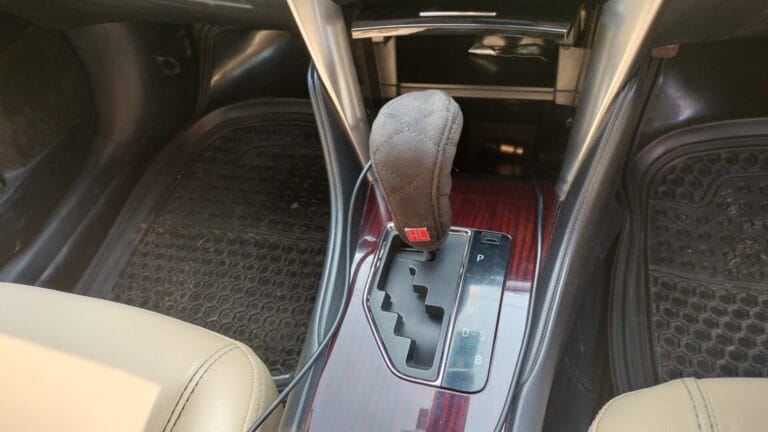Car Heater Blowing Cold Air on Passenger Side: 5 Causes and Easy DIY Solutions
It’s a frigid winter morning, and you’ve just started up your trusty vehicle for the commute. Your driver’s side warms up nicely, but one glance to your other side reveals the car is only blowing cold air. It’s terrifying, isn’t it?
What causes a car heater to blow cold air on the passenger side? The most common causes of this problem are a damaged blend door actuator and blower motor resistor failure. There could also be a partial clog in the heater core and electrical problems.
Don’t let your passengers freeze during the winter. Read on to learn the reasons behind the cold passenger side and how to troubleshoot and fix it.
An Overview of Car Heater Blowing Cold Air on Passenger Side
Here is a table illustrating the reasons behind this phenomenon:
| Cause | Solution |
| Clogged Heater Core | Remove debris. |
| Airlock in the Cooling System | “Burp” the cooling system. |
| Damaged Blend Door or Actuator | Replace the blend door or actuator. |
| Blower Motor Resistor Failure | Replace the blower motor resistor. |
| Electrical Problems | Replace worn-out components and wires |
Causes of Car Heater Blowing Cold Air on Passenger Side
Here is an in-depth look at the culprits behind this phenomenon:
1. Clogged Heater Core
Debris, rust, and sediment build up within your car’s heater core. This leads to partial or complete blockage of this crucial component. The blockage restricts and hinders the flow of hot coolant and also the heating process. Partial blockage leads to cold air on one side of your vehicle.
Other signs include:
- Temperature controls have no effect on the air
- Erratic behavior, with sometimes the vents having lukewarm or cold air.
2. Airlock in the Cooling System
Air bubbles trapped in the coolant lines interrupt the flow of hot coolant to the heater core. This prevents the core from receiving the hot coolant it needs to heat the air, potentially leading to temperature differences on the passenger side.
You will know you have this problem through the following signs:
- Gurgling sounds from the engine bay
- Burping the system allows the heat to work again
- Heat works sometimes and fails other times
3. Damaged Passenger Side Blend Door and Actuator
Blend doors control the mix of hot and cold air entering the cabin. The blend door actuator is a motor that moves the blend door to direct airflow.
If the blend door is damaged or becomes detached, it won’t seal off the cold air properly. This allows cold air to be mixed with hot air when your controls are set to full heat.
The actuator might also fail to bring the door to the correct position, leading to the same effects. Signs include:
- Clicking or tapping noises from behind the dashboard
- A mix of hot and cold air blowing when the AC is set to full heat
- Temperature difference for left and right vents, indicating uneven blend door positions.
4. Blower Motor Resistor Failure
The blower motor resistor controls the fan speed. A failing motor resistor on the passenger side causes issues with the fan speed, airflow volume, and total heat output.
Signs of a bad motor resistor include the following.
- Weak airflow from the vents despite the highest setting
- Fan works erratically
- Burning plastic smell from resistor overheating
5. Electrical Problems
Your HVAC system depends on electrical power to operate various components. Electrical issues hence affect its ability to blow out hot air even when directed to. Signs of electrical issues include:
- Temperature controls have no effect on heat output
- Heating problems occur randomly as wiring faults cause intermittent operation
- Multiple HVAC components malfunctioning at the same time
- Strange smells from wiring burning out
Step-By-Step Guide on How to Troubleshoot Car Heater Blowing Cold Air on Passenger Side
Follow these steps to fix the cold air on your passenger side:

Step 1: Heater Core Inspection and Fixing
The heater core is a small radiator behind the dashboard vents. So start by accessing and inspecting it using these steps:
- Remove the glove box or dashboard panel to access the heater core. Confirm from your manual how you should access it, as this differs for different models.
- Check for debris and leaves blocking the heater core fins. Use compressed air or a hose to clear it out.
- Flush the dirt with a cleaning solvent until the coolant is able to flow through effortlessly.
Also, check and fix the heater control valve. This is located on the firewall in the engine bay. It has two hoses attached. When the engine is warm, and one side is hot while the other is cold, then the valve is stuck. To unstick it:
- Try tapping the valve from the outside.
- If the above does not work, use valve cleaning fluid to flush out debris.
- If there is no debris, then replace the valve as it is faulty.
Here is a video showing you how to replace this valve:
Step 2: Test and Fix the Blend Door
The blend doors are located behind the dashboard. So remove the dashboard panel to access them, specifically the passenger side.
- Do a visual inspection for cracks, detachment from its actuator, or breaks.
- Turn on the car ignition and adjust the temperature controls from hot to cold and back. Listen for any clicking and tapping noise. They indicate a problem.
- Feel the airflow from the vents. Set to full heat, and if there is cold air, then the blend doors are not functioning.
- Replace blend doors if they are faulty. You will find replacement parts in the auto parts store. Just remove the old ones and replace them with new ones. Ensure you disconnect the battery terminals to avoid hazards.
- Reassemble the dashboard and test your heating system.
Step 3: Check and Repair the Blower Motor Resistor
This component is on the dashboard under the passenger side. To access the resistor by removing the dashboard panel with your car ignition turned off.
- Do a visual inspection for damage, scorch marks, melting, or other issues.
- Disconnect the resistor and take note of its wiring for reconnection.
- Unscrew it from its housing.
- Test with a multimeter for resistance across the resistor’s terminals. The resistance should be between 1 to 20 ohms. If it reads zero, then there is a short circuit.
- Find the short circuit and replace all the wiring.
- If not fixable, purchase a new motor resistor. It costs below $30 to $100, depending on the car type.
Step 4: Bleed the Cooling System
There is a bleed point in your engine compartment, just above the starter motor. Follow these steps:
- Remove the bleed point screw.
- Prepare your coolant by mixing it with 50/50 distilled water and antifreeze.
- Top up the coolant reservoir until it is at the MAX level.
- Open the radiator cap to release pressure
- Go back and fill the coolant reservoir to max level.
- Close the radiator cap and close the bleed valve.
- Start the engine and let it run for about 10 minutes. Check the coolant level for the final time. Top it up if necessary.
- Any excess or remaining solution should be taken to a recycling plant or dumped in a sewer system. Many systems can handle small amounts of this liquid.
Step 5: Check your Wiring
Follow these mini-steps:
- Disconnect your battery
- Locate the heating system components related to the passenger side. These are the blend door actuator, blower motor, and wiring harnesses to that area.
- Inspect the wiring visually. Check for loose connections and burnt insulation.
- Use a multimeter to check for continuity in the circuits.
- Inspect fuses and relays that operate the passenger-side heating components. Use a multimeter to measure continuity. If any fails the test, replace it with a fuse of the same amperage.
- Replace all the wires that are burnt and fail the continuity test, too. Reconnect the battery and test the heater to see if it works now.
FAQs
Here are answers to questions that will come in the process:
What if my car is blowing cold air on both sides?
The issue will be a faulty thermostat or low coolant levels. Just refill the coolant, check and repair your coolant thermostat, and it will be fixed.
How do I prevent the car heater from blowing cold air on one side?
Maintain the HVAC system of your car as directed by the manual. Also, conduct coolant system flushing every 3 to 5 years or 30,000 miles. Don’t forget to keep an eye on warning signs like burning wire odor, leaks, and so on. Staying proactive is the best prevention.
Conclusion
If you have a car heater blowing cold air on the passenger side, then the causes are diverse. It could be a stuck blend door, a resistor motor damaged, electrical components’ failure, and so on.
The good news is that you can fix this problem on your own. Just follow the procedure above to diagnose and eliminate the causatives one by one. And when fixed, proactively take care of the system to avoid such a problem in the future.






